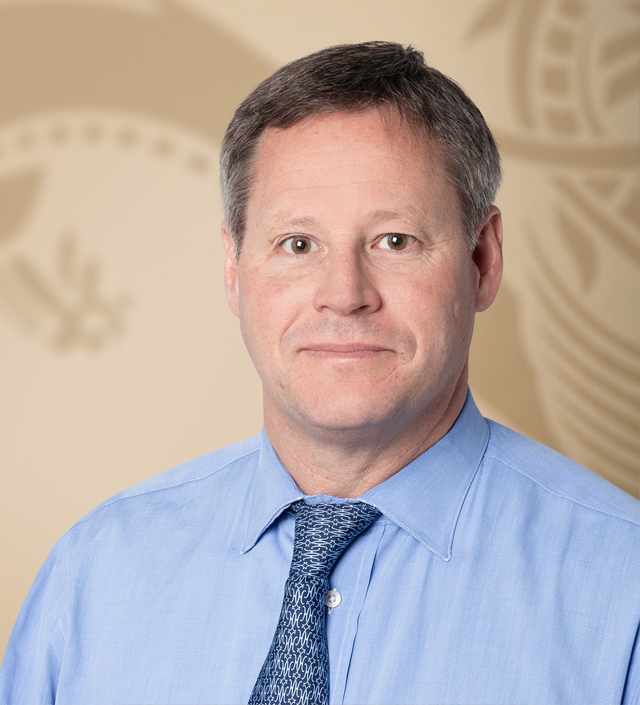When I was a young reporter working on a markets story about Callaway Golf Company, one of the world’s largest manufacturers of golf clubs, a colleague told me to ask founder Ely Callaway Jr. his age. I posed this question towards the end of our phone interview, after we discussed his earnings projections. What surprised me was how enthusiastically he replied: 73 3/4.
Callaway, who had recently introduced the innovative Big Bertha driver and taken his company public, seemed pretty old to me back then. So it struck me as very funny that he proudly responded with the fractional detail frequently relayed by small children, who don’t quite understand what it means.
What Callaway understood very well — and what I couldn’t fully appreciate at the time — is that age is worth celebrating any time of year, no matter how old we are. He also knew it is possible to dream, build and live a productive, fulfilling second half of life.
Of course, his prior success in the textile and wine industries made it significantly more doable for him to launch this new venture in his 60s. He had climbed to the executive suite at Burlington Industries (resigning in 1973 when he wasn’t named CEO); in 1981, he sold his vineyard and winery business to Hiram Walker Corp. for $14 million. He wasn’t a casualty of age discrimination, nor was he in failing health (he lived to 82).
Few retirees have millions of dollars to plunk into a late-in-life career, and many continue to work simply because they can’t afford not to. But a big part of Callaway’s success –which is shared by many people who embark upon a second act — was he was motivated to try something new, he chose to focus on something he was passionate about (golf), and he employed the skills he had honed during his decades of work experience.
In recent years, as lifespans have expanded, more people have been trying to figure out next steps that can help keep them financial sound, socially connected, mentally active, and purposeful during their retirement years.
.
Based on the U.S. Social Security Administration’s life expectancy calculator, Americans turning 65 this year will live, on average, another two decades. People who retire in their 50s could potentially spend 40 years in retirement.
According to a study by the RAND Corporation, 50% of retirees age 50 and older say they’d consider returning to work. Of these retirees, 40% of non-college graduates and nearly 60% of college graduates would work in the future if the right opportunity came along. Nearly 40% of currently employed workers who are 65 and older “retired” at an earlier point.
The big challenge is figuring out how such opportunities can become more accessible when obstacles such as age discrimination, health issues, outdated skills and money challenges persist. The solution isn’t simple: It requires a new way of thinking by individuals, by employers and by society.
This topic was discussed during the 2020 Century Summit, held by the Longevity Project in conjunction with the Stanford Center on Longevity, during the panel “Unretiring: The New Rules of the Second Half of Life.”
Moderator Richard Eisenberg, managing editor of Next Avenue, was joined by Michael Liersch, head of Advice and Planning for Wealth and Investment Management at Wells Fargo; Andrew Scott, a professor of economics at London Business School and co-author of “The 100-Year Life”; and Yvonne Sonsino, a partner and global co-leader of Mercer’s “Next Stage” platform.
Unretirement isn’t just leaving and then rejoining the workforce, said Eisenberg during the discussion. It’s about extending working lives with new careers, entrepreneurial ventures and volunteer service, he said, citing the definition from Chris Farrell, author of “Unretirement: How Baby Boomers Are Changing the Way We Think About Work, Community, and The Good Life.”
Here are 10 takeaways for unretirement, largely based on information shared by the panel.
1. Rethink traditional paths. Unretirement is “about ending the traditional idea of a linear life where you go to school, and then work, and then retire, one after the other,” said Eisenberg. Long lives don’t have to, and often can’t be, linear. People return to school later in life for various reasons, including post-retirement careers.
2. Embrace transitions. The binary view of retirement – you’re either retired or you’re not – is outdated. Longer lives are bringing more transitions, said Scott, and how one deals with those transitions is very important.
3. Soul search. Retirement transitions aren’t always smooth, but are likely to go better if they’re well thought-out. What are one’s personal and financial goals? Make money or cover expenses? Stay in the same workplace or start a new business or career? These are just some of the surface questions.
4. Redefine work. “The notion of work being a job where you turn up at a place for a fixed number of hours, and deliver a fixed number of tasks, is already disappearing,” said Scott. So is the notion that work has to be paid. Work, like retirement in general, is becoming more fluid.
5. Be flexible. Companies can retain talent by offering older workers the part-time hours they seek temporarily (perhaps to care for an ill spouse or elderly parent) or permanently. Sonsino mentioned a 62-year-old client who is working 25 hours a week coaching the next generation of employees at his firm, where he has spent 25 years, and teaching them shortcuts. “We’re calling him the operational wizard,” she said. She also noted that Unilever has created a hybrid-staffing model that falls between full-time permanent employment and contractor status.
6. Change the culture. Employers should make sure employees aren’t scared, out of fear of retribution, to ask for phased retirement. Semi-retired workers need to be treated fairly and should not be overlooked for promotions and pay reviews.
7. Provide support. Mid-lifers forced into early retirement because of health issues or layoffs should be made aware of and encouraged to check out different pathways, options, and coaching and training opportunities.
8. Invest in skills and health. This includes maintaining a fit lifestyle and staying up-to-date in one’s field and with basic technology. More emphasis should be placed on preventative medicine to help increase the likelihood that people will be fit to work in their later years.
9. Hold honest conversations. People thinking about transitioning into or out of retirement should start these conversations at home. “You see a lot of data that people’s partners and spouses don’t even know how much each other makes, or what would hold their life together,” said Liersch. “Do they share the same values and perspectives when it comes to something like a transition?”
10. Scrutinize finances. Cash flow and capital may help make or break retirement and unretirement decisions. Figuring out ways to cut expenses can help give people more options.
Jerilyn Klein is the editorial director of Rethinking65.







